The Gold Coast Railroad Museum in Miami has a couple of unusual features.
- It occupies a WWII naval air station, and uses most of the buildings and track from that facility. As a result, the location is limited in space and train operation is minimal (once a month).
- It's located next to and shares the entrance parkway with the Miami Zoo and a military museum.
So having driven down a long tree-lined avenue, and deciding that we would rather see trains than elephants, let's take a quick tour.
Part of the gift shop is located inside a couple of reefers, and behind it is one of the air base buildings.
All you wanted to know about operations at the base, including anti-submarine air ships:
And all of the covered storage for railroad equipment is inside the only hangar that survived a violent hurricane which destroyed most of the base.
Most of these pieces are in very good cosmetic condition.
Some of the baggage cars have displays of various sorts.
They've got all the bells and whistles...
For a museum in Florida, they have several ex-Burlington pieces of equipment:
Outside, a couple of cars from the Miami airport people mover:
A narrow-gauge Alco:
And this is an early inside-bearing truck, with no explanation.
Many other cars are stored outside, beyond the reach of visitors.
I got the impression that many things probably haven't changed much since the days when my old friend Jim Blower used to work here.
But inside one of the military buildings is the model railroad collection. This must be relatively new.
And there's a room dedicated to Pullman porters.
A couple of unusual cars used at Cape Canaveral: this one carried compressed gaseous helium:
And this flat car carried rocket booster parts.
Among the cars stored outside are five ex-C&NW bilevels. With a little detective work, we think this first car was C&NW 45, similar but not identical to our cars 1 and 6.
And the blue car in the distance was cab car 171, identical to our 151.
By far the best-known and most valuable artifact is FDR's presidential car Ferdinand Magellan. For an extra $5 you could take a guided tour of the car, but we decided we didn't have the time.
It's obviously been carefully maintained.
Another thing you could do for $5 is ride the little park train. But we passed on that, too. Sorry.

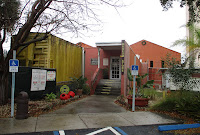








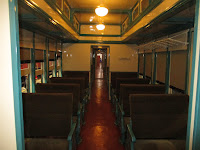










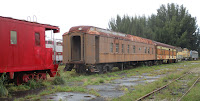










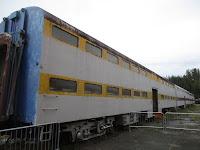



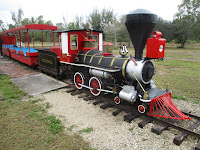

The helium car carried compressed gaseous helium, not liquid helium. When the DoD sold the fleet off, the compressed gas industry snapped them up for the high pressure tubes. Many were recycled into semi trailers and some others were used for ground storage. Being made of extremely thick "spun" steel, the high pressure tubes are very heavy. As a result, even the largest jumbo trailers that hold ~110,000 cubic feet of gas weigh about the same loaded as empty. These tubes last practically forever, even though they need a hydro test every 5 or 10 years, so the oldest tube trailers made are still in service.
ReplyDelete-T. Rich
Thanks for the correction!
ReplyDelete